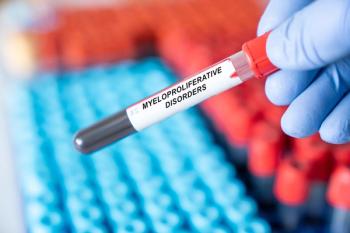
German Study Finds a Third of Patients With Myasthenia Gravis Untreated After Diagnosis
The authors said it is the first study of epidemiology and real-world treatment in Germany.
A recent study examining the incidence and prevalence of
The authors said it is the
The retrospective cohort study was based on anonymized claims data from the German statutory health insurance fund AOK PLUS, and included the federal states of Saxony and Thuringia, corresponding to around 4% of the total population and 4.7% of all people with statutory health insurance.
Two patient cohorts were defined: newly diagnosed, or incident patients, between 2015 to 2019, as well as those with existing, or prevalent MG, in 2019.
Incident patients, with a mean age of 66.9 years, totaled 775; prevalent patients, with a mean age of 68.6 years, totaled 1247.
Prevalence was estimated to be 39.3/100,000 at the end of 2019. The incidence in 2019 was 4.6 cases/100,000 persons, which the authors said was higher than cited in previous research, which relied mainly on hospital records and therefore might be underestimated.
The 12-month mortality rate was 5.7%, higher than the 1.1% seen in the general population.
The authors wrote that they were surprised to find that a little more than a third (31.5%) of newly diagnosed patients had no treatment for MG in the first year. While 5.0% of those patients had a total follow-up time of less than 90 days and may not have been able to start therapy within that time, it is unknown why the other 25% of the incident cohort were not treated, the authors said.
In addition, 29.9% experienced an exacerbation, and 6.7% a myasthenic crisis.
Within the incident cohort, pyridostigmine (60.4%), oral corticosteroids (39.4%), and azathioprine (26.8%) were the most frequently prescribed drugs; 4.4% had a thymectomy; and 9.3% were given IViG.
Azathioprine has a slow onset of action, often taking 1 to 2 years to take full effect, the authors noted.
Notably, within the first year of diagnosis, 31.0% of patients experienced exacerbations and myasthenic crises (29.9% with exacerbations, 6.7% with myasthenic crises).
“Despite current treatment options, the burden of disease remains very high for many MG patients, with refractory courses, psychiatric comorbidities, and myasthenic exacerbations and crises,” the authors said.
In addition, they wrote, “existing treatments do not target the specific antibodies and usually do not induce a full remission without the need for further therapy.”
Reference
Mevius A, Lars Jöres L, Biskup J. Epidemiology and treatment of myasthenia gravis: a retrospective study using a large insurance claims dataset in Germany. Neuromuscul Disord. Published online March 1, 2023. doi:10.1016/j.nmd.2023.02.002
Newsletter
Stay ahead of policy, cost, and value—subscribe to AJMC for expert insights at the intersection of clinical care and health economics.













































